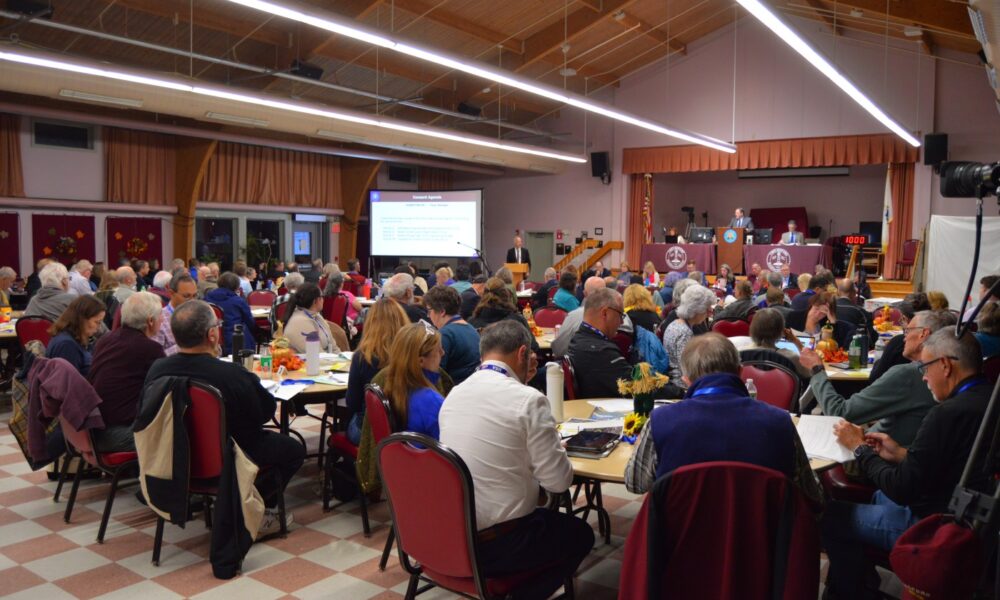UPDATE: Chelmsford’s Fall Town Meeting concluded Thursday evening with pivotal changes to zoning laws that could reshape local development. The session focused heavily on the creation of a new Roadside Commercial Light District (CBLT), a key initiative aimed at balancing industrial and residential needs.
During the meeting, the Chelmsford Planning Board Chair, Chris Lavallee, presented a bundled consent agenda consisting of 12 articles. The majority were approved with a decisive vote of 107-3, establishing the CBLT zone aimed at protecting residential areas from potential industrial encroachment. “If we approve all 11, and then vote down the 12th, all of that time on the first 11 will have been wasted,” Lavallee emphasized, highlighting the importance of a unified approach for efficient decision-making.
This new zoning designation centers around Kate’s Corner, where various zoning types coexist, including residential, commercial, and light industrial. Lavallee explained that the CBLT zone serves as a buffer, allowing for compatible development while preserving neighborhood integrity. The zone’s definition even includes provisions for “ultra-light manufacturing,” encompassing sectors like 3D printing and specialized electronics.
Town Meeting Representative Annita Tanini supported the articles, stating, “You want to build a distribution center? Fine, there are areas where you can put that in town. You cannot put that next to someone’s residential home.” This clear stance reflects the community’s push for responsible development.
The passage of Article 27, applying CBLT zoning to Kate’s Corner, was another critical moment, passing with a vote of 114-1. Lavallee assured attendees that the existing Lockheed Martin facility would remain unaffected under the new zoning, preventing any disruptive changes should the company vacate in the future.
Following these developments, the meeting shifted to Article 29, which aimed to amend the town’s definition of “family” in compliance with the Fair Housing Act. The revised definition was approved with 88-22 support, a significant move towards inclusive zoning practices. Lavallee reiterated the intention behind this change, emphasizing, “We want to make sure we are in compliance with fair housing standards.”
The meeting also addressed Article 30, which sought to eliminate references to school impacts in special permit considerations. This article faced scrutiny but ultimately passed with a vote of 86-23. Town attorney John Eichman clarified that legal precedent dictates that educational impacts cannot factor into development approvals.
As these changes unfold, residents are encouraged to stay informed about how they may affect local development and community planning. The Chelmsford Planning Board will continue to engage with residents to ensure that future developments align with community needs.
For those interested in the immediate implications of these zoning changes, the new regulations will begin to shape future development proposals in Chelmsford, fostering a more balanced approach to urban planning. Stay tuned for further updates as the town navigates these significant shifts in policy.







